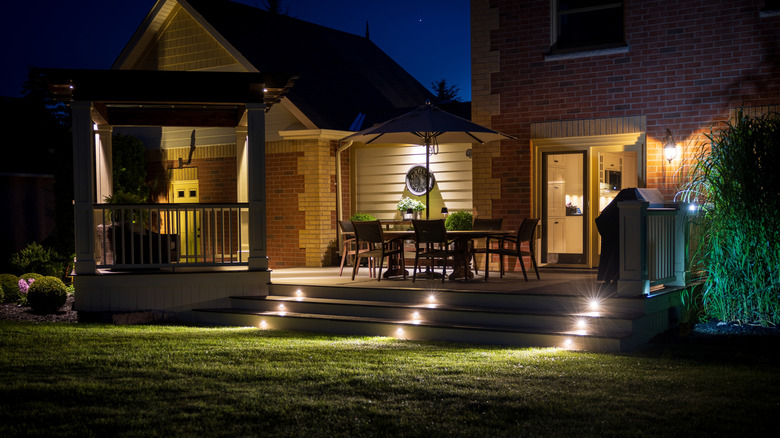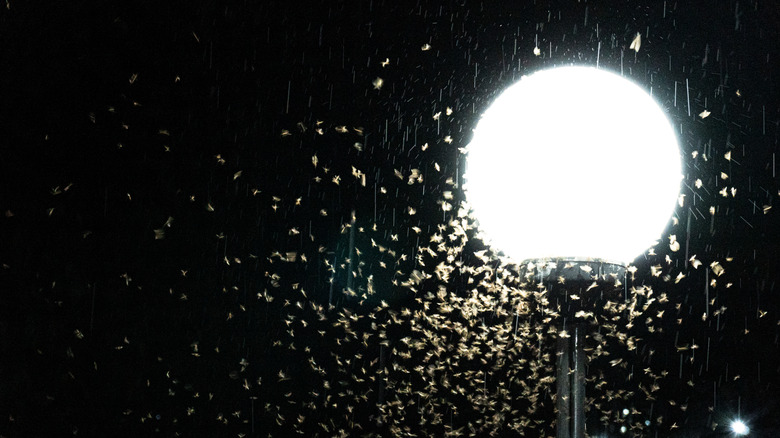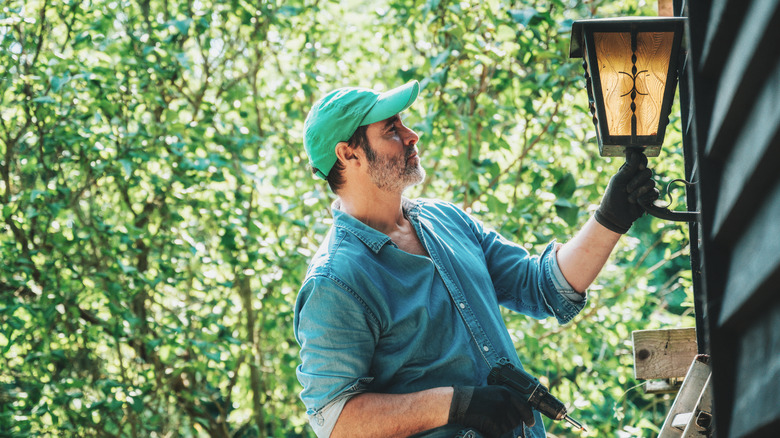The Lighting Mistake That's Ruining Your Garden
Adding lights to your outdoor space can create ambiance, mark pathways, and function as a form of security, but you may want to think twice about adding more lighting to your garden. In fact, you might want to rethink the lighting you already have. While it may seem harmless enough, excess outdoor lighting at night could actually hurt birds, beneficial insects, and even your plants. All of them use light to do things like navigate and time daily or seasonal tasks.
Research shows that over one billion birds die each year in the United States from crashing into buildings, often after being disoriented by the lights on or near those buildings. If you've ever noticed moths and other insects hovering around lamps, it's estimated that one-third of those insects will die before morning, either from getting eaten or from exhausting themselves. While those are some of the more noticeable consequences of artificial light at night, it also causes a number of other subtler but equally harmful problems that you'll learn about below.
As surprising as it may be that something as simple as outdoor lighting can have such devastating effects on just about every living thing in your yard, the good news is that it's also a really easy problem to fix. As a first step, turn off any outdoor lighting you have currently and remember to close your window curtains at night to keep indoor light inside. Then, follow the tips below to redesign your lighting in a way that minimizes harm while still allowing you to enjoy the ambiance and security that light can provide.
Why outdoor lighting is so harmful to plants and animals
Plants track changes in the length, intensity, and spectrum of light to guide processes like seed germination, production of flowers or leaves, going dormant, and waking up from dormancy. They even use the direction the light is coming from to locate and grow toward the sky. When using spotlights or other devices to light up your plants at night, you end up confusing their sense of where the sky is and disrupting the timing of key processes. For example, deciduous trees might leaf out too early in spring or drop leaves too late, both of which make them vulnerable to frost damage come winter.
Meanwhile, pollinators that are attracted to light, like moths, are spending more time swarming streetlamps and less time visiting flowers. That can directly translate to lower fruit yields in your edible garden. It also confuses other insects who normally rely on darkness as a cue that it's time to find shelter and rest. With artificial lights spotlighting your flowers and foliage, these insects will stay out longer, becoming vulnerable to predators.
Lastly, birds that migrate at night are typically guided by a combination of starlight, the Earth's magnetic field, and landmarks on the ground. The sky glow created by artificial lighting and light reflecting from windows disorients them, contributing to the high death toll each year. Other animals, including bats, frogs, and turtles, have all seen their natural routines disrupted by artificial lights.
Tips for ecosystem-friendly outdoor lighting
The enormous harm of artificial light at night doesn't mean you have to learn to live in the dark. With a few changes to your lighting design and habits, you can make a huge difference for the plants, insects, and animals that share your garden with you. The biggest change you can make is to stop leaving outdoor lights on all night long. You should also make a habit of closing your curtains at night to block indoor light and keep birds from crashing into your windows.
If you have security lights, replace them with motion sensor fixtures that only come on when someone passes by. If you need outdoor walkway lighting ideas, opt for a series of short, solar-powered lamps with covers that direct the light downward toward the ground. For porch or deck lighting, make sure the top and sides of the fixtures are shielded, so that the light shines only at the area you're using. And remember to turn these lights off when you return indoors.
For every fixture you have outside, whether for security or for your deck, switch to red or amber lights rather than bright white ones — and opt for the dimmest setting or bulb design that still serves your purpose. At the same time, keep purely decorative lighting to a minimum. Where you do need to include it, keep the fixtures directed downward and choose warm-colored lights.


